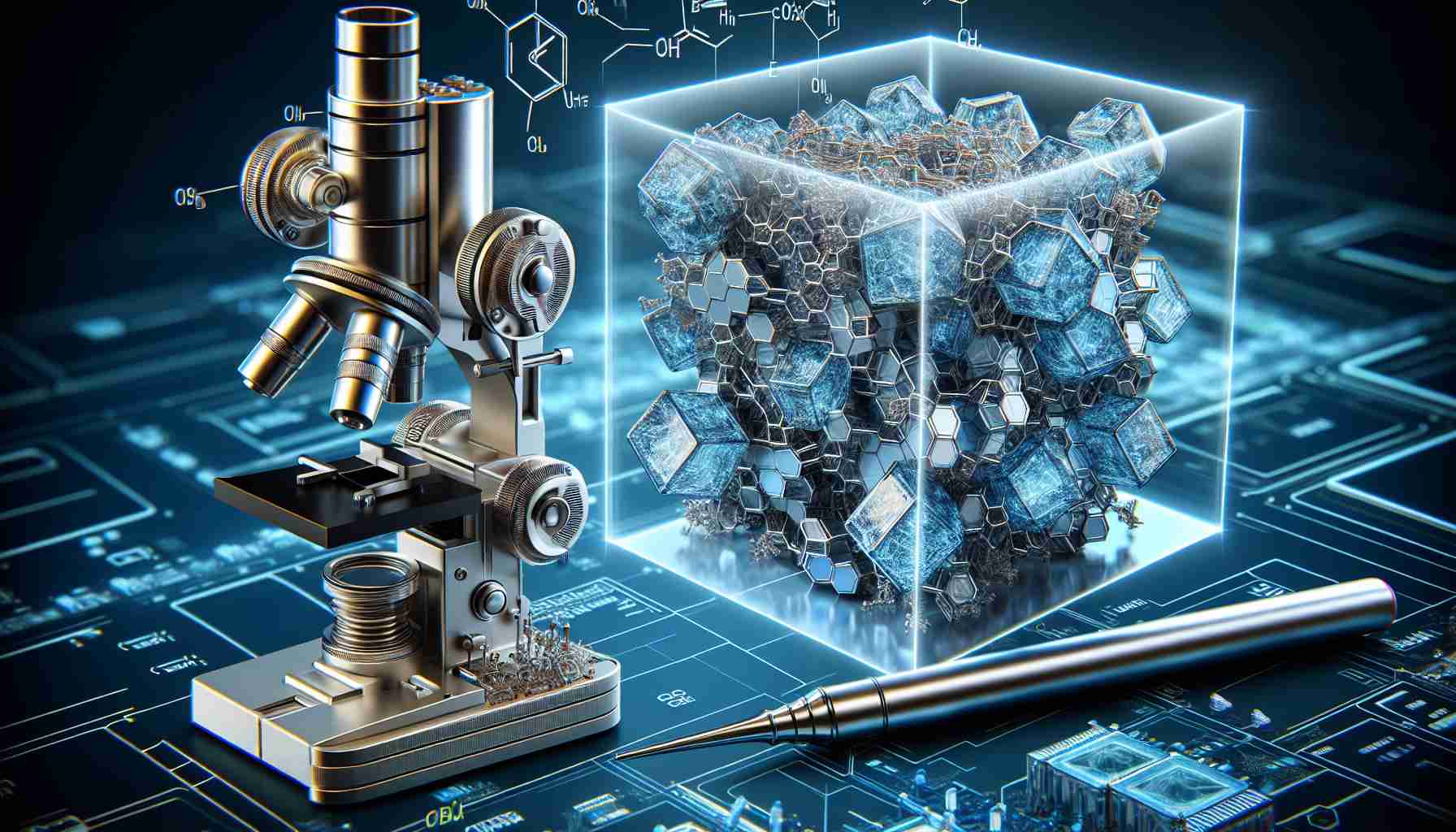In an exciting development, researchers from Cornell University have engineered a new porous crystal that could revolutionize the future of lithium-ion batteries, potentially making them safer and longer-lasting. This innovative material enables smooth lithium-ion transport, significantly improving battery conductivity and addressing critical safety concerns.
The Challenge of Dendrite Formation
Led by Assistant Professor Yu Zhong from Cornell’s Materials Science and Engineering Department, the research team tackled a major challenge in lithium-ion battery technology—dendrite formation. Dendrites, needle-like structures that form when using liquid electrolytes, pose risks of short-circuit and explosion, reducing battery lifespan.
An Innovative Approach
The research, detailed in the Journal of the American Chemical Society, centers around the fusion of two unique molecular structures: macrocycles and molecular cages. These structures were combined into a novel porous crystal design. Yuzhe Wang, the project’s lead author, introduced the fusion method, explaining how it allows the formation of nanochannels facilitating optimal ion transport.
Breakthrough Results
The newly developed material sets a record for ion conductivity among solid-state lithium-ion electrolytes, providing a seamless path for ion movement. This advancement is not only a leap forward for safer batteries but also opens avenues in water purification and bioelectronics, where this material’s properties could be exceptionally beneficial.
With these groundbreaking findings, the Cornell team has laid the groundwork for safer, more efficient, and versatile lithium-ion technology, marking a significant step towards enhanced energy solutions.
Are Revolutionary Battery Materials the Answer to Our Energy Woes?
The recent breakthrough in lithium-ion battery technology from Cornell University has unveiled a promising future for energy storage, but what remains to be seen are the broader impacts of this development on society and the environment. How might this transformative material affect our lives, communities, and even global dynamics? Here, we delve into new revelations, interesting facts, and the controversies surrounding this technological leap.
Economic Implications for the Global Market
This innovation has the potential to disrupt the global battery market by providing a safer and more efficient alternative to current technologies. Countries that heavily depend on lithium-ion technology, such as China and the United States, might see significant economic shifts. As the demand for safer batteries increases, industries may pivot towards incorporating these new materials, potentially boosting economic growth and creating jobs in sectors like electric vehicles and renewable energy storage.
The Human Health Perspective
On a smaller scale, communities worldwide could benefit from this advancement through enhanced safety in consumer electronics and electric vehicles. Current lithium-ion batteries pose fire hazards due to dendrite formation, a risk this new material aims to mitigate. As devices become safer, the incidence of battery-related accidents could decrease, cultivating public trust in rechargeable technologies.
Environmental Considerations
However, the environmental impact of producing this new porous crystal must be scrutinized. While enhancing battery longevity contributes to sustainability by reducing waste, the extraction of raw materials for these innovations could impose environmental costs. A careful balance between the benefits and potential environmental harms will be crucial.
Potential Global Controversies
The shift toward these advanced materials may also provoke geopolitical tensions. Countries rich in necessary resources might find themselves in advantageous positions, which could exacerbate global inequalities or fuel resource-based conflicts. Furthermore, the monopolization of this technology by a few companies or nations might hinder widespread accessibility and inflame political disputes.
Advantages vs. Disadvantages: Weighing the Benefits
Advantages:
– Improved safety reduces risk of battery fires and explosions.
– Enhanced longevity lowers the frequency of replacements, benefiting consumers economically.
– Contributions to cleaner energy solutions through more efficient energy storage.
Disadvantages:
– Potential environmental degradation from raw material extraction.
– Risk of geopolitical tensions surrounding resource availability.
– Economic disruption to traditional battery producers resisting technological transition.
Questions and Answers
Q: How soon can we expect to see these materials in commercial products?
A: While the science is promising, transitioning from research to commercial availability can take years due to rigorous testing and manufacturing scalability challenges.
Q: Will these advancements make electric vehicles more affordable?
A: Potentially, as production scales and safety improvements reduce insurance costs, electric vehicles might become more economically accessible to consumers.
Q: Could this innovation encourage the adoption of renewable energy?
A: Yes, by improving battery storage, this technology supports more reliable integration of solar and wind energy, potentially making clean energy more viable and attractive.
For further information on energy advancements, consider visiting reliable sources like the U.S. Department of Energy or the International Energy Agency.
This breakthrough in lithium-ion battery technology presents a hopeful vision for the future, yet brings with it new questions and challenges that require careful consideration as we progress toward a more sustainable world.







